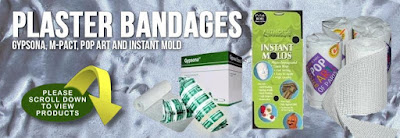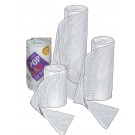Plaster is a simple, cheap and easily available material. It enjoys versatile usage too – right from coating walls and making false ceilings to craft works and other projects.
Plaster is also popularly used to make molds, shell molds, casts and even life casts. However, regular plaster will not do as it is quite soft and chalky. What you need is specially treated plaster that will be durable, resist crumbling or chipping and can hold finishes well.
And this is exactly why EnvironMolds provides CastRite Art Casting Stone. This fine arts powder proves to be an excellent choice for making all types of castings – be it figurines, statuary, picture frames, restorations or life casts.
The plaster is easy to mix and simple to work with. It cures quickly to create hard casts, and yet the casts can be carved and will hold good and crisp detail. The high-definition casts have a natural bright white finish and even air bubbles are minimized as long as correct mix ratios are maintained.
While CastRite obviously cannot be applied directly on the skin, the same formula can easily be used to make shell molds, latex slip castings and backup flexible molds.
So go ahead and source CastRite powder for your plaster casting from www.artmolds.com. Enjoy the casts and life casts but be careful while mixing and pouring, as all plasters tend to heat up a bit.
Plaster is also popularly used to make molds, shell molds, casts and even life casts. However, regular plaster will not do as it is quite soft and chalky. What you need is specially treated plaster that will be durable, resist crumbling or chipping and can hold finishes well.
And this is exactly why EnvironMolds provides CastRite Art Casting Stone. This fine arts powder proves to be an excellent choice for making all types of castings – be it figurines, statuary, picture frames, restorations or life casts.
The plaster is easy to mix and simple to work with. It cures quickly to create hard casts, and yet the casts can be carved and will hold good and crisp detail. The high-definition casts have a natural bright white finish and even air bubbles are minimized as long as correct mix ratios are maintained.
While CastRite obviously cannot be applied directly on the skin, the same formula can easily be used to make shell molds, latex slip castings and backup flexible molds.
So go ahead and source CastRite powder for your plaster casting from www.artmolds.com. Enjoy the casts and life casts but be careful while mixing and pouring, as all plasters tend to heat up a bit.






























